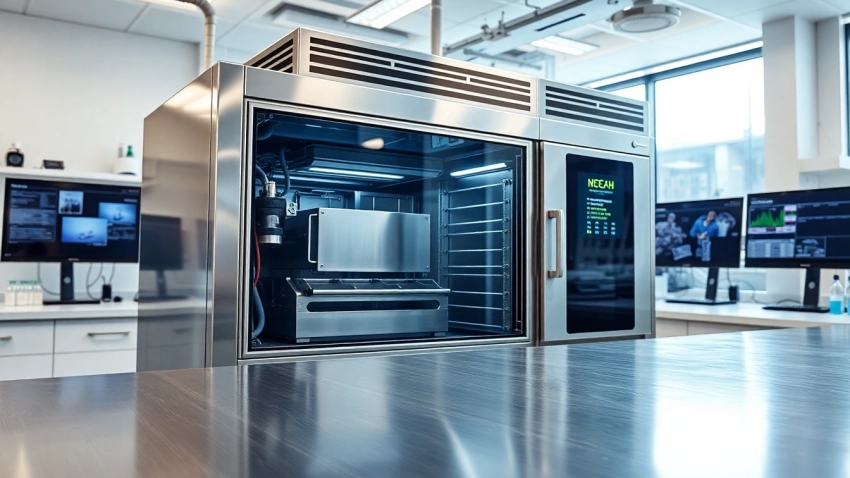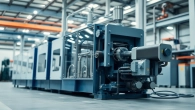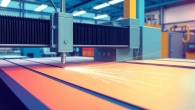
Comprehensive Insights into Industrial Freeze Dryer Functionality and Applications
Understanding the Industrial Freeze Dryer
Definition and Purpose of Industrial Freeze Dryer
An industrial freeze dryer is an advanced piece of equipment designed to remove moisture from various materials through a process known as freeze-drying or lyophilization. By lowering the temperature of a product to below its freezing point, the moisture is then sublimated (transformed directly from solid to gas) in a vacuum environment. This process is widely used for preserving food, pharmaceuticals, and many other products, maintaining their original structure, nutritional quality, and shelf life. The industrial freeze dryer plays a crucial role in industries looking for effective and robust methods of preservation, quality control, and waste reduction.
Basic Components of an Industrial Freeze Dryer
Understanding the architecture of an industrial freeze dryer involves several essential components:
- Freezing Chamber: This is where the product is placed and frozen. The chamber has controlled temperature settings that can reach below -50°C.
- Vacuum System: Utilizing a vacuum pump, the system creates a low-pressure environment necessary for the sublimation of ice to vapor.
- Heat Exchangers: These components help in managing temperature changes by allowing heat to be transferred into or out of the product during the drying process.
- Control Panel: An interface where operators input settings, monitor progress, and manage cycle parameters to ensure optimal operation.
- Condensing Unit: This component collects moisture in gaseous form after sublimation. It typically contains refrigerant to maintain the required cold temperatures necessary for condensation.
How an Industrial Freeze Dryer Works
The process of freeze-drying can be broken down into three main stages: freezing, primary drying, and secondary drying. Here’s a closer look at each phase:
- Freezing: Initially, the product is frozen, which transforms water content into ice. This usually occurs at very low temperatures to ensure that cell structures remain intact.
- Primary Drying: Under a vacuum, latent heat is applied to the frozen product. The ice sublimates, transitioning from solid to vapor without passing through a liquid phase. This stage can take several hours depending on the product and conditions.
- Secondary Drying: After the primary drying stage, the remaining bound moisture is removed. Heat is introduced again, allowing the material to reach equilibrium moisture content, which is essential for stability and longevity.
Benefits of Using an Industrial Freeze Dryer
Preservation of Nutritional Value
One of the standout advantages of using an industrial freeze dryer is its ability to effectively preserve the nutritional value of food products and pharmaceuticals. Unlike traditional drying methods, freeze-drying minimizes the degradation of nutrients, vitamins, and minerals, ensuring that the final product maintains high quality and health benefits. This preservation makes freeze-dried products more desirable in health-conscious markets as they mirror the original flavor and nutrient components closely.
Versatility Across Industries
The industrial freeze dryer finds applications in a wide range of sectors, including:
- Food Industry: From fruits and vegetables to complete meals, freeze drying allows for long-term storage without chemical preservatives.
- Pharmaceuticals: Many sensitive biopharmaceutical products require freeze drying to maintain efficacy and safety for patients. This includes vaccines, antibiotics, and other biochemical products.
- Biotechnology: Various biological and synthetic materials benefit from freeze drying, as it preserves the stability of cellular structures.
Cost-Effectiveness and Efficiency
Investing in an industrial freeze dryer can lead to significant cost savings in the long run. The extended shelf life of freeze-dried products minimizes waste and spoilage, allowing businesses to improve profit margins. Additionally, the efficiency of these machines means that they can handle large volumes, speeding up production and reducing turnaround times.
Common Applications of Industrial Freeze Dryer
Food Industry Usage of Industrial Freeze Dryer
In the food industry, freeze-drying has gained popularity among manufacturers of snacks, meals, and ingredients. Products such as fruits, vegetables, meats, and even complete dishes like soups and stews retain their taste, color, and nutritional value better when freeze-dried than through other drying methods, such as traditional air drying or spray drying. This is especially important for outdoor and survival food, where long shelf life is desirable.
Pharmaceuticals and Biotechnology Applications
An industrial freeze dryer is a critical tool in the pharmaceutical sector. Active ingredients and compounds need careful handling to remain potent, and freeze drying offers a viable method of processing that maintains their integrity. The lyophilization process allows for precise control over temperature and pressure, which is essential for sensitive compounds that cannot withstand typical thermal processing.
Research and Development with Industrial Freeze Dryer
Research institutions and laboratories utilize industrial freeze dryers to preserve biological samples, chemicals, and materials needed for study. This ensures reliability and reproducibility of results, as freeze-dried materials can be stored long-term without losing essential properties.
Key Features to Consider When Choosing an Industrial Freeze Dryer
Size and Capacity Options for Industrial Freeze Dryer
When selecting an industrial freeze dryer, it’s vital to assess the required size and capacity. This depends on production volume and the types of products processed. The availability of various sizes allows businesses to choose units that fit their space and demand, from smaller models for niche applications to large-scale systems for high-volume production.
Energy Efficiency and Operating Costs
Efficiency is a paramount consideration in industrial operations. Modern freeze dryers are equipped with energy-efficient technology to minimize operational costs. Assessing energy consumption metrics ahead of purchase helps in forecasting long-term operational expenses.
Maintenance Requirements for Industrial Freeze Dryer
Regular maintenance ensures the longevity and effective operation of an industrial freeze dryer. Users should consider the maintenance intensity of potential models, including the frequency of part replacements and the complexity of repairs. Proper maintenance not only prolongs the life of the unit but also contributes to consistent product quality. It would be beneficial to engage with suppliers that offer robust technical support and maintenance services.
Future Trends in Industrial Freeze Dryer Technology
Advancements in Freeze Drying Techniques
As technology continues to evolve, advancements in freeze drying techniques are likely to emerge. Innovations such as improved heat transfer methods and advanced vacuum technologies promise increased efficiency and product quality. Research into process optimization not only aims to reduce drying times but also lower energy usage.
Integration of Automation in Industrial Freeze Dryers
The move towards automation in manufacturing environments is also making its way into freeze-drying operations. Automated systems allow for real-time monitoring and adjustments, lessening the need for human intervention and minimizing potential errors. This results in more precise and consistent processing.
Environmental Considerations and Sustainability
With growing concern for environmental impacts, there is a push towards sustainability within the industrial sector. Freeze-drying operations can explore environmentally friendly practices, such as utilizing eco-friendly refrigerants and developing energy-efficient designs. Manufacturers that adhere to sustainable practices tend to attract environmentally-conscious consumers, strengthening brand loyalty.












Leave a Reply